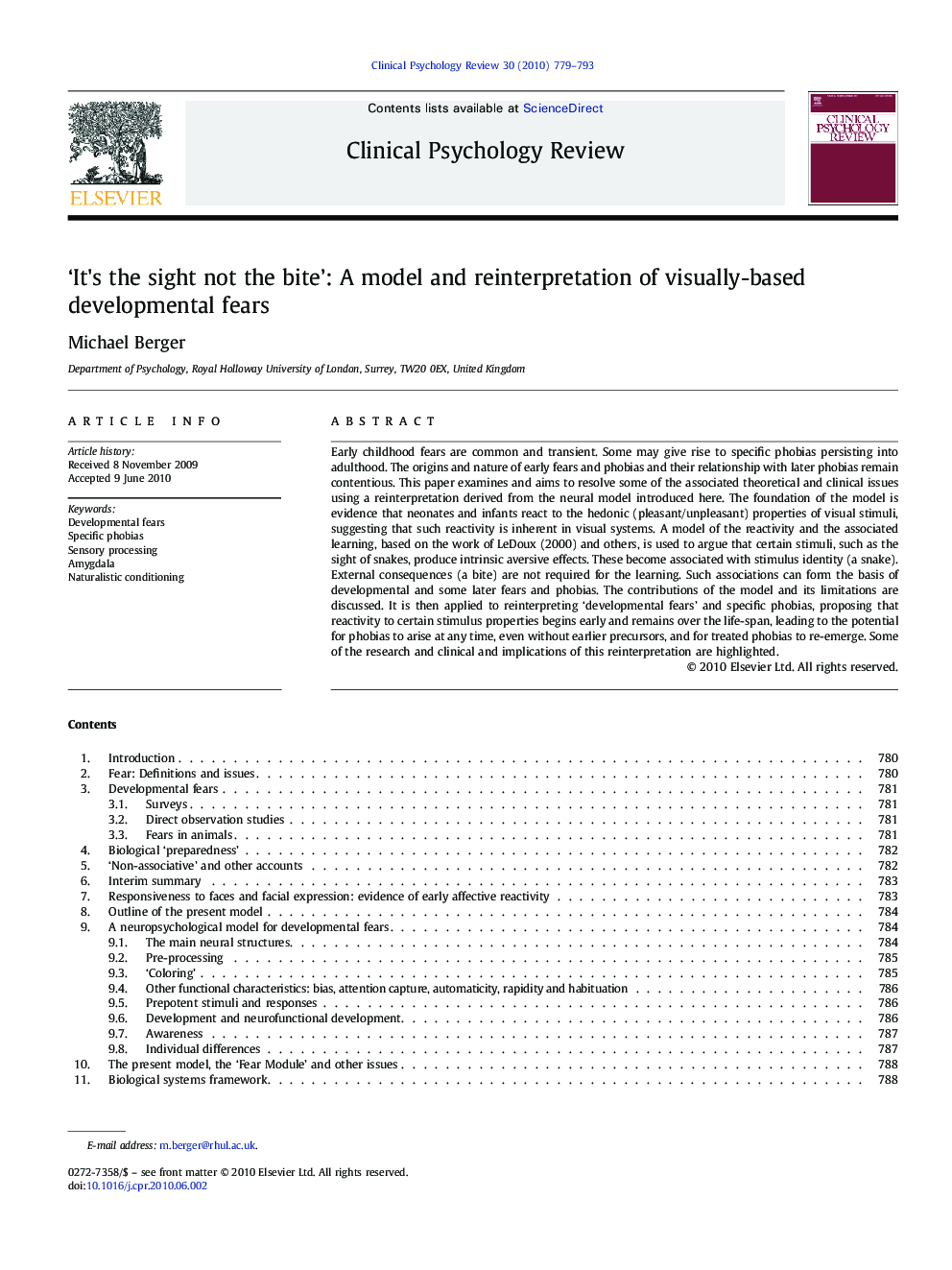| Article ID | Journal | Published Year | Pages | File Type |
|---|---|---|---|---|
| 903887 | Clinical Psychology Review | 2010 | 15 Pages |
Early childhood fears are common and transient. Some may give rise to specific phobias persisting into adulthood. The origins and nature of early fears and phobias and their relationship with later phobias remain contentious. This paper examines and aims to resolve some of the associated theoretical and clinical issues using a reinterpretation derived from the neural model introduced here. The foundation of the model is evidence that neonates and infants react to the hedonic (pleasant/unpleasant) properties of visual stimuli, suggesting that such reactivity is inherent in visual systems. A model of the reactivity and the associated learning, based on the work of LeDoux (2000) and others, is used to argue that certain stimuli, such as the sight of snakes, produce intrinsic aversive effects. These become associated with stimulus identity (a snake). External consequences (a bite) are not required for the learning. Such associations can form the basis of developmental and some later fears and phobias. The contributions of the model and its limitations are discussed. It is then applied to reinterpreting ‘developmental fears’ and specific phobias, proposing that reactivity to certain stimulus properties begins early and remains over the life-span, leading to the potential for phobias to arise at any time, even without earlier precursors, and for treated phobias to re-emerge. Some of the research and clinical and implications of this reinterpretation are highlighted.
